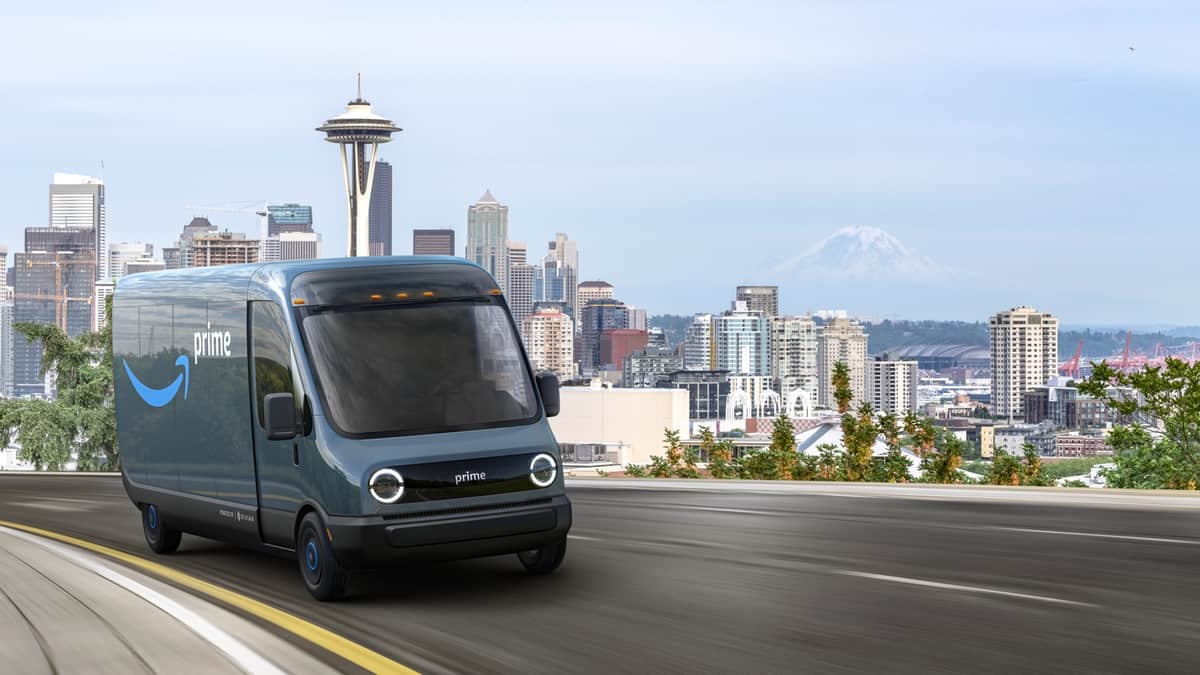Elena Bernardo says innovation is “near and dear” to her heart, and a move from a career in banking to one with Amazon was a mindful one.
“A business career seemed so practical and I went into banking — super safe, super straightforward,” Bernardo told an audience that included three rows filled with Amazon T-shirt clad men and women during the Women In Trucking Association’s Accelerate! Conference & Expo in Dallas last week. “I realized in a couple of years this probably isn’t going to be a forever career choice. I was just so curious about other things. I wanted to see the world. I wanted to understand general management.”
Bernardo went to business school and rebranded herself as a management consultant, “which is awesome for people with curiosity because you get to do everything — three- or four-month projects, you’re in and out of different industries,” she said.
Working with clients around the world, Bernardo found time spent in operations was her favorite because of “the instant impact that you can have.”

Five years ago, Amazon (NASDAQ: AMZN) came calling. Today, Bernardo, a wife and mother of sons ages 17, 13 and 9, is the director of Amazon Transportation Services.
She first witnessed Amazon in motion when she joined the company in October 2014, right about the time the company was launching Prime Now.
“The concept was that we’re going to launch this ultra-fast, free, one- to two-hour delivery to Prime members in urban locations. It was initially Manhattan. It’s only five years old, but it feels like this has been around forever because it’s become synonymous with the Amazon brand. It has grown now to serve millions of customers” in more than 50 U.S. cities and in such countries as the U.K., Germany and Japan.
“I don’t recall there were any focus groups where it was decided … that two hours is the magic time and not six hours or eight hours,” she said. “The team challenged themselves to say, ‘Well, what would be a really radical shift? And what could be a theoretical minimum and why don’t we try and achieve that instead?’ The team took that and went from concept to pilot in 111 days, which is pretty amazing because none of the playbooks in existence for this applied.”
Bernardo said while the development of Prime Now “was an innovation clearly for end customers, we also do innovations on behalf of our partners. One of them is our delivery service partner program, which is … designed for entrepreneurs starting their own home delivery companies. It is actually giving people who are external to Amazon access to delivery volume from Amazon, access to our technology, hands-on training and discounts on value-added services.”
She said Amazon also is innovative in the way it helps employees “get trained in high-demand career paths, even if the career path is not with Amazon.”
“Associates come with different career aspirations, and some of them will choose to build their career with Amazon,” Bernardo said. “For others, Amazon is a step toward a career in another field. We wanted to recognize that need.”
Amazon now has on-site classrooms at facilities around the world for employees enrolled in college and technical classes.
“Transportation is our most popular program. I think one-third of participants choose this path. We work with a number of large trucking companies that have set up Amazon-specific hiring processes,” Bernardo said. “For me this is a really, really exciting program.”
She said Amazon also considers the environment a customer and in another innovative move has signed “a promise that we would be net zero carbon across all our businesses by 2040, which is a decade ahead of the Paris Accord goal.” While this is ambitious, Bernardo said, Amazon took the 2040 stance to “stimulate investment in low-carbon products and services, including for transportation.”
Addressing Amazon’s carbon footprint also includes focusing on facilities and packaging.
“I started in operations procurement,” Bernardo said. “Packaging was a huge, huge category. … We used to call it overboxing. It was like a box in a box — and the boxes were huge.”
Amazon has transitioned to shipping products in their original packaging when possible and avoiding overboxing. “The best way to save is to not ship so much air,” she noted.
Surface transportation is a major component in Amazon’s ability to achieve carbon neutrality.
“We have a long road ahead of us to get to almost zero tailpipe emissions,” Bernardo said. “But it’s starting to emerge, and we believe we can support this development.”
She said Amazon recently announced it had ordered 100,000 emissions-free electric last-mile delivery vans, “the largest order ever,” and that those vehicles will begin taking to the streets in 2021, with delivery of the vans to continue through 2030.
Another innovative move was the introduction of the “Amazon Relay product, which is our technology for carriers, drivers and shippers. We developed a series of apps that enable our partners to work with us in a more streamlined way,” Bernardo said. “It’s offered to carriers and our partners who drive for us to make their operations more efficient.”
She explained, “There’s an app for drivers that offers turn-by-turn commercial navigation to ensure drivers are taking the safest route to their destination. …. We’ve also introduced expedited gate check-in and electronic yard navigation.”
GPS technology “has opened up a whole slew of capabilities,” Bernardo said. “You can see on a geofence right away when something isn’t moving.”
While Amazon constantly is evolving, its “customer obsession” remains the same, she said.
“If you take this to the nth degree, there are a lot of things to obsess about. How do you know what to obsess about and where to focus your time? At Amazon we took a look at what are the stable set of preferences that never go out of style,” she said. “Price, selection and convenience, no matter what changes, these elements probably will stay constant.”










